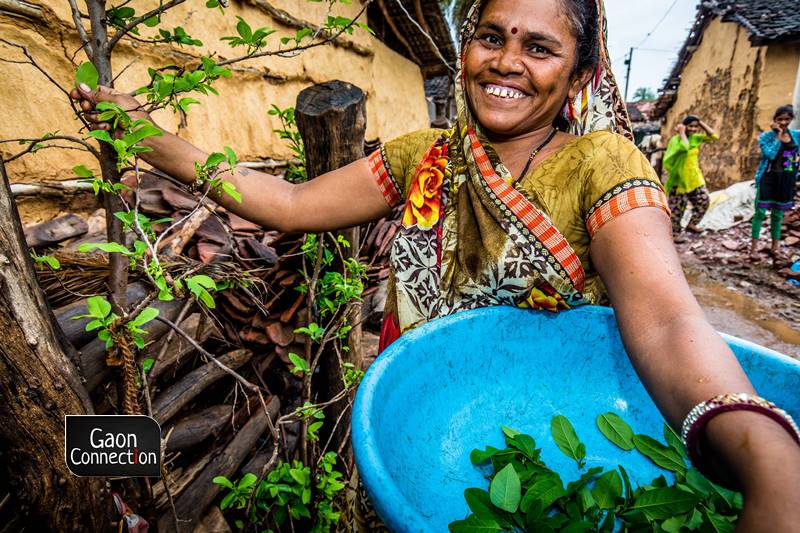Non-pesticidal management in agriculture is a win-win for farmers and consumers
The non-pesticidal management (NPM) method of farming involves multiple strategies to control pests and to maintain the health of the crop – before, during and after the crop cycle. These include intercropping, mixed cropping, crop rotation, planting of trap crops and border crops, and use of organic matter.


While natural pesticides repel bad pests, chemical pesticides kill all pests, thereby leading to an ecosystem imbalance.
The COVID-19 pandemic has brought a shift in consumers’ eating habits with many increasingly preferring healthy foods. Though awareness towards avoiding chemical-laden food has increased exponentially, recognition of the practical and affordable alternatives available still has a long way to go.
On the one hand, certified organic products are not accessible to a large audience due to their high prices. On the other hand, small and marginal farmers are left to choose between conventional farming, which is dependent on expensive inputs, and organic farming.
The shift from conventional farming to organic farming is capital intensive and involves a long conversion period. Non-Pesticidal Management, commonly known as NPM, of agriculture attempts to bridge this gap.
Also Read: The journey from a cycle rickshaw driver to an organic farmer
The NPM method of agriculture involves multiple strategies to control pests and to maintain the health of the crop – before, during and after the crop cycle. Prior to sowing, a range of pesticide-free practices are employed to improve the overall soil health and to strengthen the natural defence mechanism of the crop ecosystem.

The NPM practices include
- Intercropping and mixed cropping to ensure that the overall health of the crop ecosystem is enhanced
- Crop rotation to break the cycle of insects and weeds
- Planting of trap crops and border crops to ward off harmful pests and reduce contamination risk due to pesticide drift from adjacent fields
- Using organic matter – compost, green manure – to improve soil health
Phases of pest management
There are essentially two phases for pest management during the crop growth season. In the first phase, surveillance and prevention measures, such as placing pheromone traps to determine pests are deployed. Weeding at important junctures of the crop cycle, placing bird perches, and removing disease-ridden plants are carried out during this phase.
The second phase involves managing pest attacks. Farmers are encouraged to spray locally made bio-pesticides, such as Neemastra, Agniastra, which are made with natural ingredients such as chilli, ginger, garlic, neem etc. These bio-pesticides deter pests.

Also Read: Lemongrass cultivation greens Banka’s barren land and promises profit to farmers
Many smallholder farmers, especially in the remote hinterlands of India, still rely on informal lending institutions to cover input costs, a lion’s share of which is spent on synthetic pesticides. The NPM movement seeks to break this cycle by providing smallholders with the skills to prepare and use inexpensive, yet effective bio-repellents at home, thereby reducing their dependence on informal markets.
Furthermore, bio-repellents are often more effective than synthetic pesticides as they control and prevent pests, while chemical alternatives merely aim to destroy them. Moreover, while natural pesticides repel bad pests, chemical pesticides kill all pests, thereby leading to an ecosystem imbalance.
Therefore, NPM is not only financially lucrative for farmers, but is also one of the most practical, sustainable, and effective alternatives to conventional farming.
Market linkages
Successful cultivation of the crop is only half the battle. Small-scale farmers, especially women, have limited access to organised markets and often sell their produce at prices dictated by local moneylenders or traders.
As civil society organisations (CSOs) and farmer producer organisations (FPOs) lead the NPM movement and grow stronger, it becomes increasingly important to market these sustainably grown products to enable smallholders to receive a premium. Safe Harvest was born out of this need in 2009.

Farmers who practice NPM and work with Safe Harvest earn around 20 per cent more than those who cultivate conventionally. Safe Harvest buys directly from farmers at a two to three per cent premium, eliminating transportation costs for farmers, reducing their expenditure and increasing income. In some cases, produce bags are also provided, further lowering costs and increasing savings.
Also Read: Agtech is our best bet for a sustainable and inclusive agrarian economy
Pesticide-free farming has been practiced by marginal farmers for many years, despite their superior quality, they are grouped into the conventional produce category since there is no separate category for pesticide-free produce. The NPM movement is giving the pesticide-free produce the recognition it deserves. We need to simultaneously empower farmers by connecting them to consumer markets and providing safe and healthy food to consumers.
Anukriti Mishra is operating as a Marketing Manager at Safe Harvest Pvt Ltd. Views are personal.

